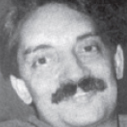At first, I thought a vehicle ahead of us had leaked gear oil onto the road. It was a little before noon and we had almost reached the turn off to Gairal on the main tar road that leads from the Dhanghari gate to Dhikala. I stopped the vehicle, wondering how I could mop up the oil when, in the dappled light of the sal forest, the stain that had looked jet-black from a distance took on a distinctly scarlet hue. The large pool of arterial blood I stood over probably came from the throat of an animal that had been choked to death by a tiger, minutes before we arrived.
I got back into the car to watch for the cat, figuring it would be hidden nearby, breathing heavily from its exertion, and staring straight at us. As I have done umpteen times before with well-camouflaged tigers, I drove slowly away for 100 m., turned the ignition off for a couple of minutes and drove right back to the spot where the tiger was now visible, 30 m. to our right in a thicket. The kill was hidden from view, and when the tiger sat down, it too vanished.
After 10 minutes of silence, punctuated by calls of barbets, kingfishers and woodpeckers, we drove to the Old Forest Rest House at Gairal, where an indolent week of birding by the swift-flowing Ramganga River lay ahead of us.
Corbett is exceedingly special. It makes you feel grateful to be alive. The park exudes an indescribable vitality, with or without the kind of drama we witnessed on the main road. Sighting a tiger, leopard, elephant or bear in Corbett would pump as much adrenaline into my system as it would for first-time wildlifers. But the real joy, the real purpose of visiting Corbett is to walk on the same soil and breathe the same air as nature’s living works of art.
Like so many others, my love affair with these forests and hills began long before I ever set foot in Kumaon or Garhwal – through the gripping tales of Edward James (Jim) Corbett.
By the time I was 16, I had read every book Corbett had ever written, and I was more familiar with Kaladhungi, Nainital, the Bangajhala valley, Powalgarh, Rudraprayag, Mokameh, Champawat, Mohan and Kanda than the backstreets of Kolkata where I grew up.
“If you have been as influenced by his books as you say you have and want to start a wildlife magazine, go to the hills around Corbett National Park. Walk his trails.” That was the late R.E. Hawkins, publisher and editor of Jim Corbett’s books and representative of the Oxford University Press, on the subject of what he thought it would take to infuse Sanctuary magazine with real quality.
Hawk was never a ‘personal’ friend of Jim Corbett’s. In fact, he only got to know him through correspondence and, of course, through the incredible manuscripts, which the famous hunter sent him. Not that Corbett needed any endorsement; his first book sold 2,50,000 copies in the U.S. alone and was subsequently translated around the world.
His warning that India could lose the tiger was resented by hunters who scoffed at him towards the end of his time in this country. But Corbett’s voice was too powerful to be ignored and he managed to indelibly etch the imminent demise of the tiger on the psyche of India.
Hawk is not around anymore, nor are those all-time greats – Dr. Salim Ali, Humayun Abdulali, K.S. Dharmakumarsinhji, Kailash Sankhala, M. Krishnan, Deb Roy and S.P. Shahi. Heroes all, they lived to protect India’s wildlife and laid the foundation for all the wildlife battles we fight today. To a man, they influenced me deeply and in their own unique ways each extracted a promise from me to take their battles forward.

